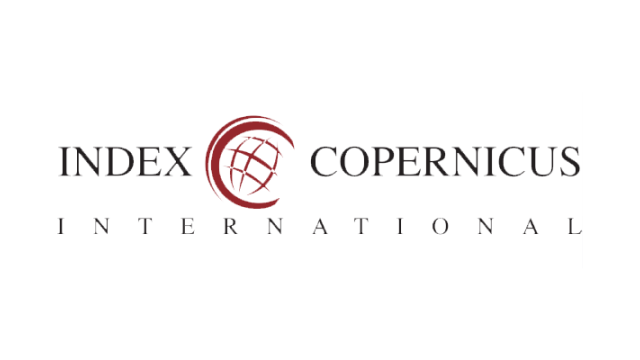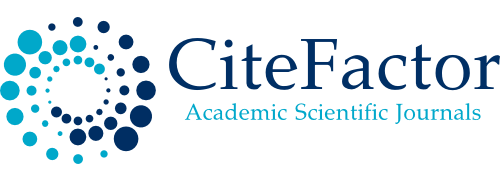Effectiveness of Iron and Giving Tablets Folic Acid and Hemoglobin Content on the Improvement of Student Learning Outcomes
DOI:
https://doi.org/10.61841/c16wv041Keywords:
Iron and Folic Acid Tablets,, Hemoglobin and Outcomes StudyAbstract
One of the problems faced by Indonesian teenagers are micronutrient nutrition, which is about 12% of boys and 23% of adolescent girls are anemic, mostly due to iron deficiency. Anemia in adolescents adversely affect the decline in immunity, concentration, academic achievement, teen fitness and productivity. In addition, specifically anemia experienced by young women a more serious effect, considering they are the mothers who become pregnant and give birth to a baby, thus increasing the risk of maternal mortality, premature birth and low birth weight (LBW). The provision of iron tablets along with other micronutrients (multiple micronutrients) is more effective in improving iron status, compared to only provide iron supplementation in the form of a single dose. Objective is known effectiveness of iron and acid tablets to Increased levels of hemoglobin and Student Learning Outcomes. Design this study is a Quasi Experimenta pre and post test without control. Place of research in Prodi D-III Midwifery Balikpapan with the number of sample of 33 female students. Analyze data usingPaire frequency distribution and sample t test. Measuring instrument research were: 1) a questionnaire (the characteristics of respondents, age, history of malaria, Final menstrUji pattern Semesteri) Examination Antopometri to measure: IMT 3) laboratory tests measure the levels of worm infestation and HB. The mean value of the variable posttest hemoglobin levels higher than the average pretest. The mean value of the variable learning outcomes posttest lower than the mean value of the pretest.The provision of iron and folic acid tablets are not effective against the increase in Hemoglobin and Outcomes Study on the students level II Prodi D-III Midwifery Balikpapan.
Downloads
References
[1] Briawan, et al. 2009. Determinants of success of Iron Supplementation Program on School Students. Journal of Clinical Nutrition Indonesia. Vol. 6. No. 2 November 20019: 78-83. (Accessed 23 April 2019).
[2] Dumilah & Sumarti. 2017. Relationships Genesis Anemia Students Learning Achievement Featured In SMP Bina Insani. Amrita Nutr (2017) 331-340 DOI: 10.2473 / amnt .v1i4. 2017.331-340 (Accessed 1 April
2019)
[3] Hasanah Hanz. Relationships Nutritional Anemia Iron deficiency Substance with Biochemistry Student Learning Outcomes Biological Science Journals Unimed 2014. Healthy and Prosperous Families 2015; 13 (25): 29-36.
[4] Kaimuddin, et al. 2017. Genesis Anemia Screening and Determinants in Young Women SMAN 3 Kendari Year 2017. Student Scientific Journal of Public Health Vol. 2/6 / May 2017 (accessed
[5] Kemenkes. 2013. Principles Indonesia Riskesdas 2013. Ministry of Health. Agency for Health Care Research & Development. www. Libang.depkes.go.id (accesed 1 April 2019)
[6] Kemenkes.2014 Ministry of Health Regulation No. 88 Year 2014 About the Tablet sandart added darahbagi Eligible Women & Maternity
[7] Kemenkes. 2016. Guidelines for the Prevention and control of anemia in adolescents and Women of fertile age. Nutrition Drektorat masyarat Directorate General for Public Health Ministry of Health.
[8] Kepmenkes No. 2016 HK.03.03 / V / 0595/2016 on the Granting of Tablet added darahpada Young Women and Women of fertile age (accessed March 6, 2019).
[9] Lester, et al. 2015. Relations with Genesis Consumption Iron Anemia in Students of SMP Negeri 27 Padang. Andalas Medical Journal. 2017; 6 (3) (accessed 1 April 2019).
[10] Merryana. 2012. Introduction to Nutrition Society. Kencana Jakarta in Kaimudin et al. 2017. Genesis Anemia Screening and Determinants in Young Women Kendari 2017. SMAN 3 Jimkesmas Vol 2/6 / May 2017 (accessed March 4, 2019).
[11] East Kalimantan Health Polytechnic BPPSDM MoH. 2017. Academic Guide.
[12] Rahmawati Kristanti Dwi. 2011. Analysis factor Cause Nutritional Anemia Iron incident on Young Women in SMAN 2 Bandar Lampung in 2011. Thesis, University of Indonesia.
[13] Suryani, et al. 2015. Analysis of Dietary and Nutritional Anemia Iron in Young Women Bengkulu City. Thesis. Journal of Public Health Andalas
[14] WHO. 2001. Iron Deficiency Anemia Assessment, Prevention, and Control A guide for program managers. WHO / NHD / 01.3 (accessed 1 April 2019).
[15] WHO. 2011. Guidelines: Iron and Folic Acid intermittent in menstruating Women Suplementation. WHO Library Cataloging-in-Publication Data (accessed 23 April 2019).
Downloads
Published
Issue
Section
License

This work is licensed under a Creative Commons Attribution 4.0 International License.
You are free to:
- Share — copy and redistribute the material in any medium or format for any purpose, even commercially.
- Adapt — remix, transform, and build upon the material for any purpose, even commercially.
- The licensor cannot revoke these freedoms as long as you follow the license terms.
Under the following terms:
- Attribution — You must give appropriate credit , provide a link to the license, and indicate if changes were made . You may do so in any reasonable manner, but not in any way that suggests the licensor endorses you or your use.
- No additional restrictions — You may not apply legal terms or technological measures that legally restrict others from doing anything the license permits.
Notices:
You do not have to comply with the license for elements of the material in the public domain or where your use is permitted by an applicable exception or limitation .
No warranties are given. The license may not give you all of the permissions necessary for your intended use. For example, other rights such as publicity, privacy, or moral rights may limit how you use the material.









